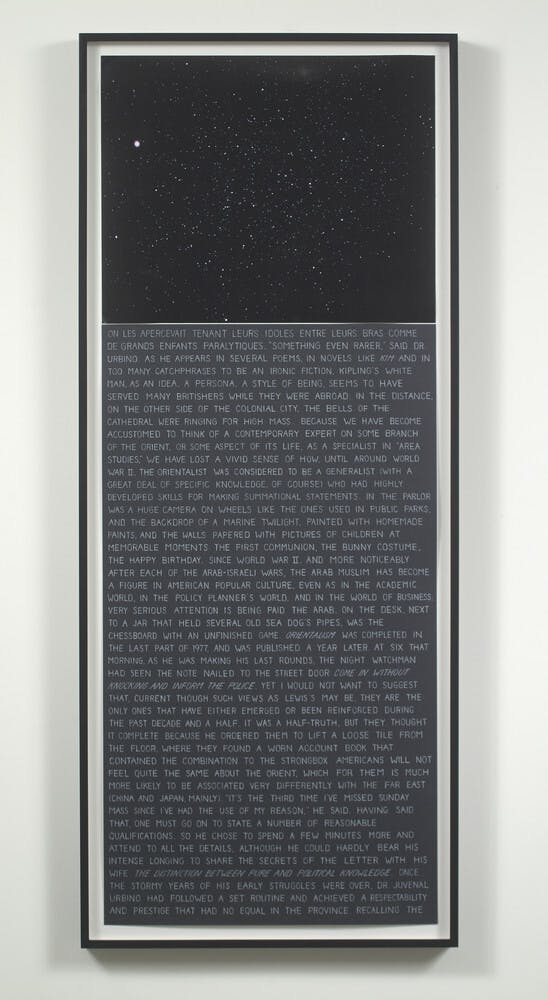Thresholds
In reflecting on art as a portal between the tangible and spiritual, the following are altars, maps, paintings, and multimedia works that engage ritual and introspection.
By mapping a world anew, and manifesting reconstructed futures in our image, in art, the divine becomes an extension of our reality. In this selection, each work relishes uncertainty and presents a point of access to the unknown. To cross this threshold is to honor ourselves as guardians of our present and guides for the rest of our way home.
Thresholds was organized by Starasea Camara, former Studio Museum/MoMA Joint Curatorial Fellow. Listen to Starasea speak more about Thresholds on the Bloomberg Connects app here.
Depicting an Egyptian pharaoh's golden head and a framed bird statuette,
Betye Saar’s triptych Window of Ancient Sirens (1979) also includes a figure reminiscent of the Egyptian funerary ba-bird of the Ptolemaic period, its sun disk reflecting cycles of the moon, a solar orbit encircling a woman in a red smock.
Firelei Báez and Jeff Donaldson conjure an intergenerational and intercultural dialogue, shedding light on Yoruban spiritual traditions in, respectively, Elegant gathering in a secluded garden (or the many bridges we crossed) (2018) and Victory in the Valley of Eshu (1971).
Sam Gilliam’s Mars I (1974) blends the abstraction of bleeding tones of magenta and navy coupled with the softened texture of rice paper. The pools of rich colors might simulate black holes awaiting to swallow the viewer into deep space.
Hale Woodruff’s Portal (n.d.) is believed to be created in the early 1960s—during the conception of the artist collective Spiral—amid the artist’s “Celestial Gate” series, where he explored the theme of thresholds.
In Tracey Moffatt’s Invocations (10) (2000), a little girl with deep brown skin in a blue dress and hairbows crosses the threshold between a knotted forest onto a warped desert landscape—the spectral composition encapsulating her in time.
We see a similar “hyperlapse” technique explored within Entropia (construction) (2005), as Julie Mehretu layers reconstructed drawings that fold in on themselves repeatedly to lure the viewer into the composition, forming a passageway between audience and object.
Charles Gaines’s Randomized Text Drawing #2 (2006) places excerpts from Love in The Time of Cholera (Gabriel García Márquez, 1985) and Orientalism (Edward Said, 1978), below a photo of a night sky, emphasizing the impact of human creation through a single luminous star to the left.
By mapping a world anew, and manifesting reconstructed futures in our image, in art, the divine becomes an extension of our reality. In this selection, each work relishes uncertainty and presents a point of access to the unknown. To cross this threshold is to honor ourselves as guardians of our present and guides for the rest of our way home.
Thresholds was organized by Starasea Camara, former Studio Museum/MoMA Joint Curatorial Fellow. Listen to Starasea speak more about Thresholds on the Bloomberg Connects app here.







